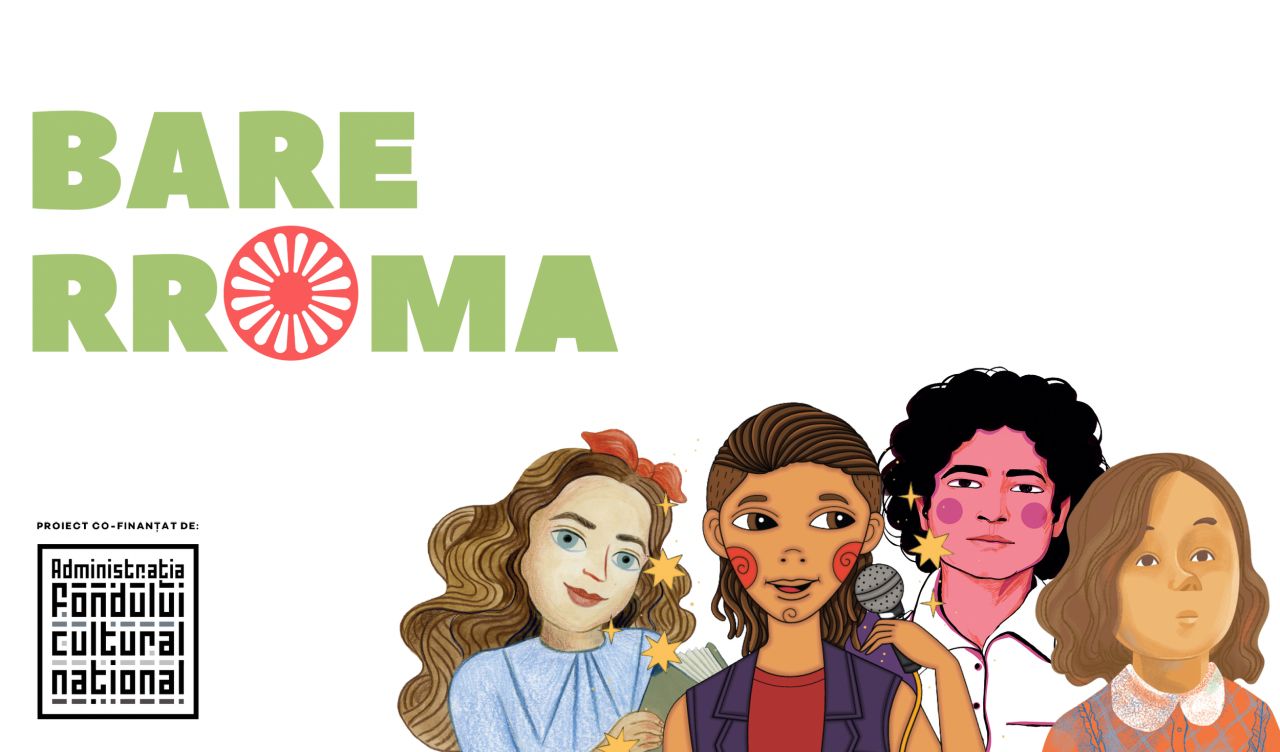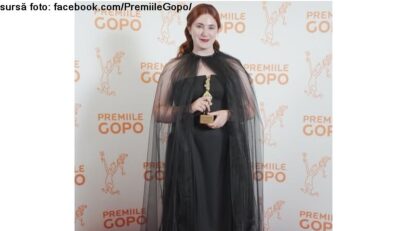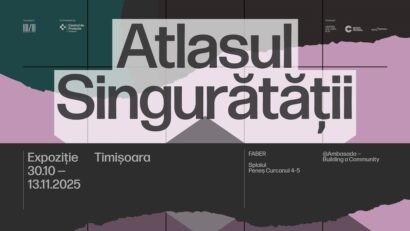“Cu alte cuvinte”, a multi-award-winning association
The "Bare Rroma" project, initiated by the "Cu Alte Cuvinte Association", received this year's Radio România Cultural Gala award in the Education category

Corina Cristea, 08.11.2025, 12:10
The “Bare Rroma” project, initiated by the Cu Alte Cuvinte Association, received this year’s Radio România Cultural Gala award in the Education category. Founded in 2016 by Gabriela Nenciu and Cris Pîrvu, the Cu Alte Cuvinte Association set out to bring diversity to the children’s book market and took on an important role in promoting it by creating spaces where children and adults can openly discuss Roma culture and history, disability, neurodiversity, diverse families, gender stereotypes, and socio-economic challenges. A first step was the publication of the first book for teenagers with Roma characters, “The Story of the Lost Kendama,” which won the Romanian Writers’ Union Award in 2018. This was followed by “The Ring with the Horse’s Head,” the first illustrated history of the Roma for children, written by two Roma authors, and Bare Rroma (which in Romani means “big/important people”), the first series of illustrated books that brings the lives of Roma personalities to the forefront.
We spoke with Dora Cerin, project coordinator, about the beginnings and history of the association, which in just eight years has managed to change mindsets and facilitate the creation of numerous illustrated books.
Track :“First of all, it’s a very beautiful process. There are 19 illustrated books, 13 of which feature Roma characters. Most of them are illustrated children’s books, mostly for children over 5 years old. However, we also have a book for teenagers, and we have somehow reached this area, the middle school cycle, thus addressing teachers who teach in those classes. But, as I said, most of the books are designed for kindergarten and primary school. At first, we had this approach, of having the books designed by experienced writers, who would come into contact with a community of children and be inspired by their stories and aspirations, and basically create a story inspired by reality. Then, in 2022, we changed our approach slightly, in the sense that we wanted to create a platform for young Roma authors, through which they could become writers. In this way, we also encouraged young Roma writers to make their debut. This project, Bare Rroma, which has already won several awards, relied on the fact that most of the writers were debutants. As for the selection process for Roma authors, we have an open call. At the last open call, for example, several young Roma applied and we finally selected eight future writers.”
Now in its second edition, “Bare rroma” presents four stories featuring Roma heroes and heroines who serve as role models for us all. While the first edition featured four stories about two activists, an actor, and a musician, this second edition brings us stories about a soprano, an actress, a painter, and a sociologist. These are four books that challenge us to look beyond the stereotypes associated with Roma and discover people who are models of perseverance, talent, and generosity. The heroes and heroines were chosen by the eight young people who wrote the books, under the guidance of writer Iulia Iordan and journalist Delia Marinescu. Obviously, the project was also born out of a desire to integrate Roma children. Seven out of ten teachers say that their Roma students do not declare their ethnic identity, the main reasons being fear of discrimination and shame, according to the results of an online survey conducted by the Cu Alte Cuvinte association, with the support of several NGOs working in disadvantaged communities.
Here is Dora Cerin, project coordinator at the Cu Alte Cuvinte Association, with details about the Bare Rroma project:
“It is our most beloved project, somewhat different from our previous projects, in which we facilitated the creation of storybooks. The idea for the project came from teachers, more specifically from a teacher who raised the issue that she was facing a lack of materials to present models of the Roma community to children, materials that were appropriate for their age. That’s how this idea was born, and it was very well received by teachers and the general public. Certainly, it was also the fact that through this initiative we went beyond the boundaries of an editorial project that simply proposes a story. The positive reception was also due to the fact that Roma authors were involved. It was also important that the books were based on interviews with the personalities featured in them. Many connections were made, and I can say that these meetings between the Roma authors and their heroes were very emotional. I would like to point out that the selection of these emblematic characters who appear in the books was never made by the association. It was made by the young people enrolled in the project, based on arguments, but the selection belongs to them. And the activities with the children in the class were much more interesting because some of the children already knew the heroes in the books and took them as role models.”
Until now, the books published by the Cu Alte cuvinte team were mainly distributed to schools and libraries, but the association has now managed to bring to Romanian bookstores the first illustrated book for children over the age of four, written by a Roma author, “Bariș. De vorbă cu ploaia” (Bariș. Talking to the Rain). Created by Alexandru Zamfir, a teacher and storyteller, and Daniela Olaru, an illustrator passionate about children’s art, the book perfectly combines story and illustration, encouraging young children to ask questions about cultural identity. (MI)






























